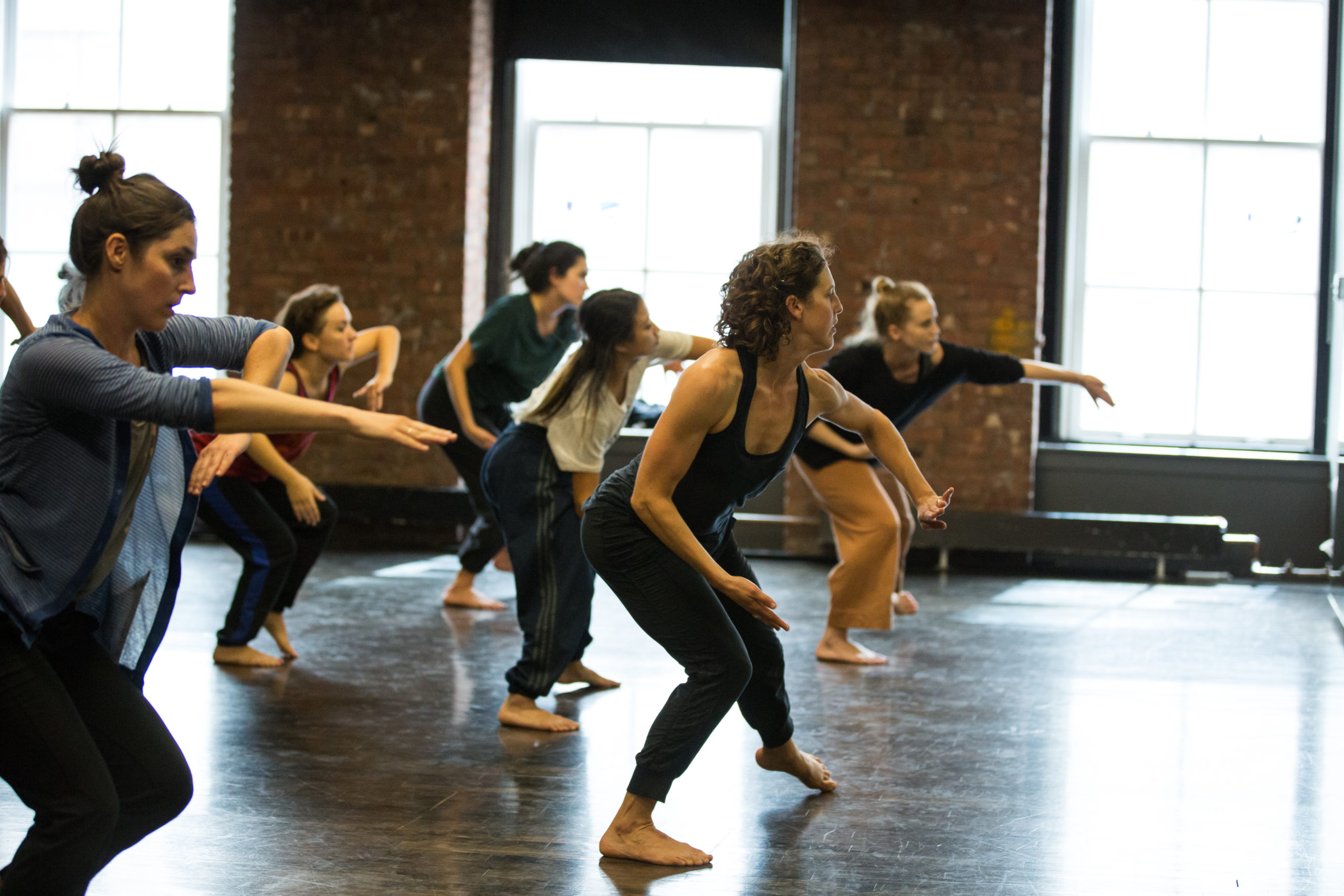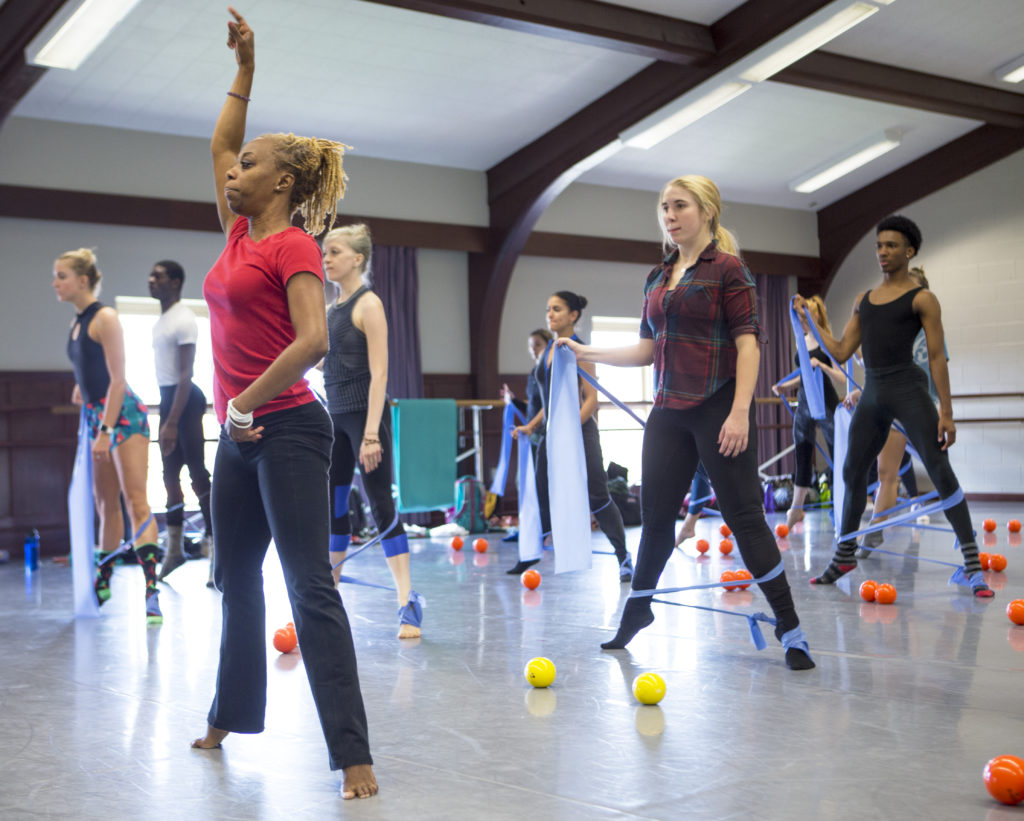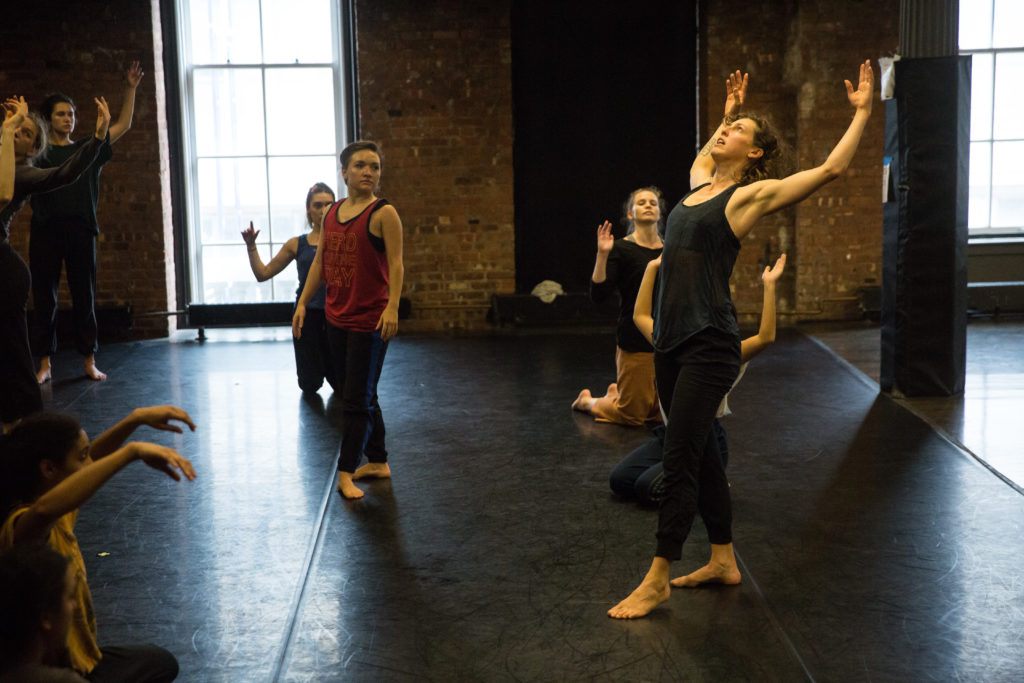
Teaching isn’t just what happens inside the dance studio. Thoughtful dance educators know that preparing for class—developing combinations, laying out a structure, readying their minds and bodies to teach—can be as crucial as the actual time spent with students.
Here, five dance teachers from across genres and settings share how they plan for class and prepare to teach.
Kehinde Ishangi
Assistant professor, Florida State University

On prepping her body: “I usually start off with noticing my body and figuring out what I need, and thinking about what I’m going to do with the students. I teach Dunham technique differently than ballet because with ballet, the language is more common—it’s easy for me to do a quick demonstration and then just call out the terminology. Students have rarely had Dunham technique before, so I find myself needing to demonstrate far more to help them understand it. I make sure that I’m warmed up enough to show them things that I might find myself demonstrating over and over again. I use floor barre, Franklin Method concepts with my balls and my band, and I have a Gyrotonic pulley tower in my office.”
On knowing when to throw out your plan: “I read the room from the moment I walk in. It takes a learned practice of knowing when to push your agenda or when to pause and listen to what the students need.”
Carlos Renteria
Ballet director, Dancing Images Dance Center

On the importance of warming up as a teacher: “The older I’ve gotten, I’ve come to realize that I can’t just spring out of bed and teach. So I make sure to do some Pilates in the morning, or I give myself a ballet class, or roll out my muscles with my foam roller—something to wake my body up and get it moving for the day. Oh, and arriving not on time but ahead of time, so that I feel calm and composed and not rushed.”
On how his planning routine has evolved: “When I was first teaching consistently, I would write down every combination. I had a customer service job, and during less busy times, I would be writing little notes. My co-workers told me they would always see me dancing. I thought I was just thinking about it—I didn’t know I was actually moving! But I would write down every single thing, and now I’ve gotten into a rhythm where I don’t need to do that anymore.”
Donnell Oakley
New York City–based contemporary teacher

On the challenge of planning for what students will need: “I used to have more assumptions about what people would have a hard time with. Some of those things are really obvious, like if we’re doing inversion work or if we’re doing something with a lot of weight shifting in the arms. So I always know that I’m going to have to break that down a lot. That’s not always the case, though, because what I think makes sense or is organic, like how many steps you’re taking between these two moves, may not be as organic to the next person. So I’ve let go of making a lot of assumptions about what people are going to need or what the struggles are going to be, because it just runs the gamut.”
On knowing when to let the plan veer: “Veering away is good for me and good for them, so I can keep fresh eyes and not just go plow in there and do my thing. I want to see as many people as I can and see what’s needed, or see what the general need is. I feel like improvisation is something that’s always in my pocket when we need to segue away from what we’re doing, to get a little more agency or ownership, and then maybe bring back the phrase again.”
Jonathan Porretta
Pacific Northwest Ballet School faculty member

On overcoming creative blocks: “I have an arsenal of combos, so if I’m stumped, I’m like, ‘Let’s pull out this Stanley Williams class from when I was a student, or give this Olga Kostritzky combination a try.’ And sometimes it’s just like, ‘Wow, why didn’t I think of this? Why was I so baffled?’ I love to watch other dance teachers—you can learn so much from seeing the way another teacher will come up with a dégagé combo. And you’re like, ‘I would have never thought of putting that with that!’ I watch a lot of YouTube classes—I love World Ballet Day classes, there’s so many unbelievable teachers. When I watch a class, it’s like watching a ballet to me.”
On overplanning vs. underplanning: “It’s always better to plan more. Like it’s better to show up overdressed than underdressed to the party. I’d rather be overplanned and have to simplify versus not having enough meat to make the sausage. And it does happen that things take longer, and you have to shorten a combo. But I don’t even worry about fitting everything in if I feel that what we’re working on is important.”
Catherine Gallant
New York City–based public school dance educator

On planning to change the plan: “My plan, however detailed and fully imagined it is, is not greater than the needs of the students. My plan is always going to change, and I need to have a plan to change the plan. It’s a delicate balance of feeling secure in the knowledge of what you propose to do but being ready to improvise and shift and change and adapt at any time. The thing that helps me to know the amount of shifting and adapting I will have to do is knowing the students. I can’t plan in an authentic way unless I know the people I’m planning for. Otherwise, teachers need to be brilliant improvisers—which mostly we are.”
On prepping her body: “The only way I can continue to do this is to keep my instrument ready so when I demonstrate, I don’t kill myself. I do 12 minutes of jogging, and I feel the blood flowing through the muscles, and the cardiovascular and respiratory systems getting a bit of a wake-up. I then do a 15-minute ballet barre. And then I have my physio ball and do about 5 minutes of rolling around and stretching out my spine. I feel like, OK, yes, I can move. I’m still a dancer-type person. And that gives me a sense of readiness.”




